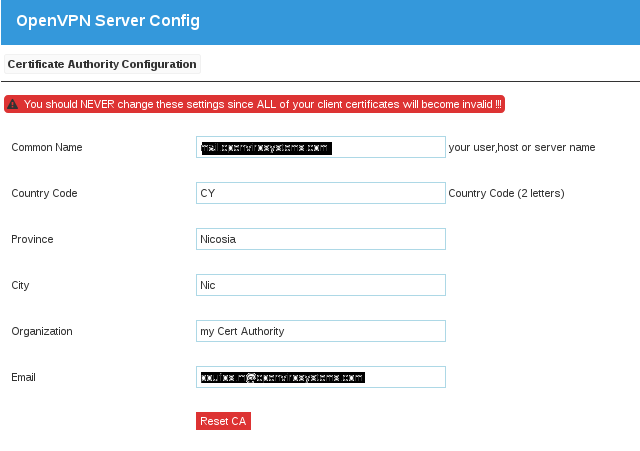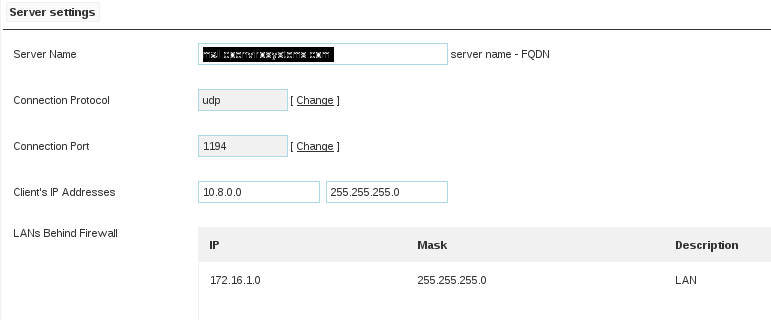Configuring Remote Access VPN ClientsUsing a VPN, or virtual private network, is the most secure way to remotely access your home or business network. VPNs provide strong security by encrypting all of the traffic sent between the network and the remote client. OpenVPN Configuration WizardThe simpliest way to configure a Remote Access VPN is to follow the build-in OpenVPN server configuration management. This one-page configuration will help you create the needed Certificate Authority and configuring the Server settings. The authentication method is based on Client certificates without passwords. This method has the advantages of high security and mobility. One configuration (with embedded certificates) can be used to all of the users' devices like Pcs, mobiles, tablets. Creating a certificate authorityThe CA (certificate authority) should be created only once and will be used by the internal ESG authentication module to authenticate both remote access clients and site-to-site VPNs. Through the Web interface navigate to : VPN Server -> OpenVPN configuration All fields are mandatory and self-explanatory.
 
Fill the server settings fields and save the configuration.
 
Issuing a Client CertificateNow you are ready to generate your clients' certificates. Navigate to : VPN Server -> OpenVPN Users
 
Add Name and Company to the required fields. Download the newly created certificate (client1-full.ovpn) using the icon and import it to your device using the OpenVPN client software. OpenVPN ClientsMS Windows : [ Download ] Centos/redhat Linux : Install through package management or from CLI run : #yum install openvpn Android / i-phone : Use Play Store or Apple Store to download. |
Configuring Remote Access VPN ClientsUsing a VPN, or virtual private network, is the most secure way to remotely access your home or business network. VPNs provide strong security by encrypting all of the traffic sent between the network and the remote client. OpenVPN Configuration WizardThe simpliest way to configure a Remote Access VPN is to follow the build-in OpenVPN server configuration management. This one-page configuration will help you create the needed Certificate Authority and configuring the Server settings. The authentication method is based on Client certificates without passwords. This method has the advantages of high security and mobility. One configuration (with embedded certificates) can be used to all of the users' devices like Pcs, mobiles, tablets. Creating a certificate authorityThe CA (certificate authority) should be created only once and will be used by the internal ESG authentication module to authenticate both remote access clients and site-to-site VPNs. Through the Web interface navigate to : VPN Server -> OpenVPN configuration All fields are mandatory and self-explanatory.
 
Fill the server settings fields and save the configuration.
 
Issuing a Client CertificateNow you are ready to generate your clients' certificates. Navigate to : VPN Server -> OpenVPN Users
 
Add Name and Company to the required fields. Download the newly created certificate (client1-full.ovpn) using the icon and import it to your device using the OpenVPN client software. OpenVPN ClientsMS Windows : [ Download ] Centos/redhat Linux : Install through package management or from CLI run : #yum install openvpn Android / i-phone : Use Play Store or Apple Store to download. |

 Login
Login